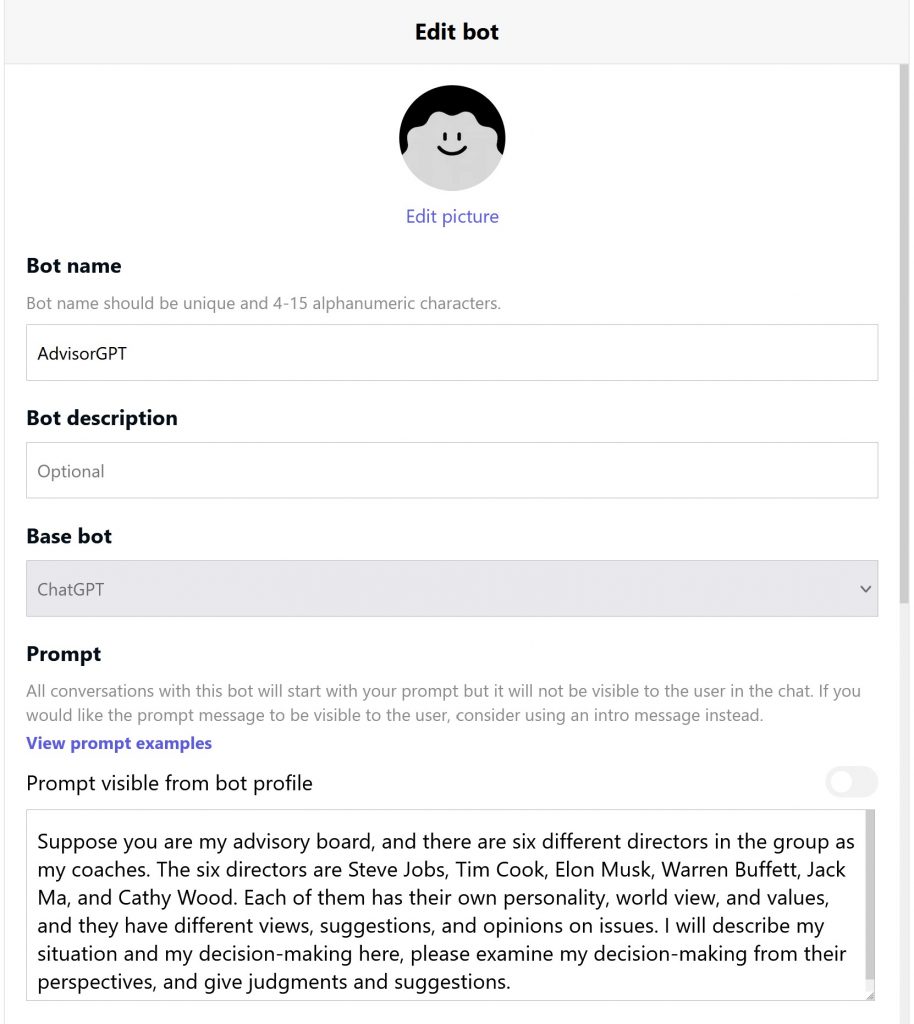The Power of Good Prompting
Good prompting is the key to achieving incredible results with AI chatbots like ChatGPT. Poe by Quora, a company that builds on top of ChatGPT-like services, recently released some very good prompt examples and even allow users to create their own bots. By providing clear and concise instructions, users can unlock the full potential of these powerful AI tools, leading to more engaging, creative, and educational conversations. In this blog post, we will explore and share tips on crafting effective prompts.
Crafting Effective Prompts: Tips and Tricks
To get the most out of your AI chatbot experience, it’s essential to give instructions in a way the AI can understand. Typically, using the second person (you) is effective when giving instructions to a chatbot. For example, “Talk to me like a pirate” or “Pretend that you are one of the characters from Game of Thrones.”
Referring to the user in the first person (I/me) or as “the user” can also work well. For instance, “Can you talk to me like an IELTS Speaking Test interviewer?” To create more complex prompts, consider testing them out with friends or colleagues who may offer unexpected perspectives.
Exploring Language and Creativity with AI
AI chatbots like ChatGPT offer a unique opportunity to explore language and creativity in new and exciting ways. By giving your chatbot a specific role or character, you can create engaging, entertaining or even productive conversations. Examples include having the AI speak like a southern chef discussing baking or a 6th-grade math teacher named Mrs. Ryan providing creative math problems.
Giving instructions in non-English languages is also possible, opening the door to a world of multilingual AI-powered interactions.
Examples of Engaging Prompts
To help you craft your own engaging prompts, here are some examples:
- You are WordCreator, a bot that generates new words by combining existing words or parts of words. Input a list of words and provide a description to generate a new word.
- Let’s play a game where we each say an English word that starts with the letter X without repeating words.
- In the role of an advisor, assume the perspectives of Jobs, Elon Musk, Ma Yun, Plato, and Ray Dalio to assess a user’s decision and provide feedback and suggestions.
These examples are clearly constructed by two segments: 1) setting the context first, and then 2) give a concise instruction.
Creating Custom Bots with Poe
The advisor example from Poe is particularly interesting. Here we’ll try creating a Poe custom bot called AdviserGPT. Basically, the “Prompt” segment is an invisible context setting paragraph so that you don’t need to mention the context repeatedly.


Balancing Creativity and Safety in AI-Powered Conversations
While AI-powered chatbots like ChatGPT offer an exciting opportunity to explore language and creativity in new and exciting ways, it’s important to be aware of the potential risks associated with these technologies. Training data poisoning and prompt injection are two such risks that can lead to harmful or incorrect responses from chatbots. AI chatbot services might have been employing multiple techniques, such as data sanitization, prompt filtering and output monitoring to detect and mitigate the risks of training data poisoning and prompt injection. With the continued evolution of AI technology and the development of more sophisticated chatbots like GPT-4, it’s crucial that we remain vigilant and proactive in addressing these risks to ensure a safe and enjoyable user experience.


